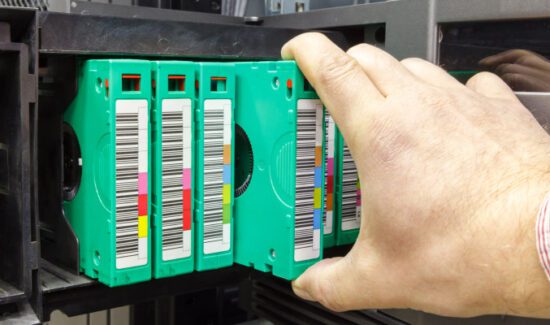Data Storage Costs: Three Key Steps to Better Manage Spend


This is part of Solutions Review’s Premium Content Series, a collection of contributed columns written by industry experts in maturing software categories. In this submission, Arcserve Product Management Director Ahsan Siddiqui offers a look at data storage costs and three key steps to better manage storage spend.
 Storage costs continue to skyrocket as data creation rapidly increases, and data management grows more complex due to the explosion in remote work. The average cost of storing a single TB of file data is now pegged at $3,351 per year. And that’s just the beginning because storage is only one component of total costs. Organizations must also account for IT resources like the hardware, software, and personnel required to manage and protect their data.
Storage costs continue to skyrocket as data creation rapidly increases, and data management grows more complex due to the explosion in remote work. The average cost of storing a single TB of file data is now pegged at $3,351 per year. And that’s just the beginning because storage is only one component of total costs. Organizations must also account for IT resources like the hardware, software, and personnel required to manage and protect their data.
Every business is becoming more and more digitalized, generating vast amounts of data from product videos, social media posts, customer transactions, and data from IoT devices. IDC predicts that the volume of unstructured data worldwide will grow from 33 zettabytes in 2018 to 175 zettabytes (that’s 175 billion terabytes!) by 2025, an annual growth rate of 61 percent.
Companies are drowning in data, mainly due to the widespread belief that the worst thing you can do is delete any data. It is understandable because you never know which innocent piece of data today might suddenly become hugely important tomorrow.
Understandable, yes. But is it feasible? Today’s IT decision-makers are confronted with the challenge of balancing the surge in their data volume with spiraling costs—while simultaneously trying to maintain data resilience.
The good news is some solutions and approaches help IT departments reduce costs while still managing and protecting company data and ensuring business continuity in the face of any unexpected event. Here are three ways organizations can manage their data more cost-effectively.
1: Explore Data Tiering
All data is not created equal and is not equally valuable. If your goal is to save money, storing or backing up every scrap of data in your organization is probably unnecessary. There is a lot of redundant data that does not need to be preserved long-term, such as system images or replaceable data.
You should seek out enterprise data storage solutions that provide capabilities like data tiering. This enables you to move the data you use less often to less-expensive storage levels. It also reduces storage costs while safeguarding your most valuable data.
With data tiering, you can confidently preserve and back up your essential data and spend less on storing the data you deem less important. A further upside of data tiering is energy efficiency—and lower electricity bills—because you’ll be devoting less compute power to storage.
2: Have a Plan for Data Growth
When organizations invest in storage solutions, they don’t know how much storage they’ll need three, five, or ten years later. If they don’t invest enough, they’ll have to go through the
evaluation and budgeting process more often than necessary, which can be time-consuming and costly in and of itself. On the other hand, they could be overpaying when they don’t need to if they purchase too much storage. Keep in mind that, as your business changes, the type of data you’re storing changes, as do the technologies in the market.
The option to purchase storage up front at a reasonable price and then scale it out cost-effectively over time is critical. Instead of jumping in headfirst and paying an arm and a leg, look for storage solutions that start at a reasonable cost and are highly scalable. These solutions should begin with terabytes of storage and scale out to petabytes. The right solution will allow you to add any number of drives and/or nodes in any granularity to meet your growing storage requirements.
3: AI-Enabled Storage Helps Control Cost
The advent of AI-enabled storage is helping organizations keep costs down while managing their data more effectively. How? AI-enabled storage applies intelligence and machine learning to help companies quickly figure out which pieces of data are critical to their business and which are less important and may not need to be stored.
AI-enabled storage can also help companies decide which datasets can be offloaded to the cloud and which should be stored locally. Real-time intelligence and analytics performed by the storage system can determine the optimal placement for data and the best way to ensure data protection.
Final Thoughts
Organizations today must stay on top of the ever-increasing amount of data they generate. It’s not easy—or inexpensive—to do so, as data storage costs rise rapidly. But there are strategies organizations can embrace to control the cost of storing their data while managing it to their advantage.
- Data Storage Costs: Three Key Steps to Better Manage Spend - September 8, 2022






















